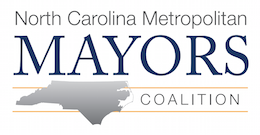Where Are the ‘Recovery Summer’ Stimulus Projects? (The New Republic)
Washington Post reported on a recent White House analysis of the American Recovery and Reinvestment Act. That assessment found “strikingly few claims of fraud or abuse,” according to the article. Well, good!
We’ve complained before that ARRA’s welcome emphasis on transparency tilts too much toward curbing this kind of waste and too little on establishing a clear, sensible focus on measuring outcomes, irrespective of the multiplier effects of speedy spending Jon Cohn points out. (Though, ironically, the report does not yet appear to be available on Recovery.gov.) But thanks to the ongoing oversight by the House’s Transportation and Infrastructure Committee, we are provided with clear and rich information on those projects in the committee’s jurisdiction along with a locational identifier for each. This data is reported by the states individually but kudos to the staff and committee leadership for pulling this together and making it available.
So what does it tell us? Our analysis shows that, just looking at the transportation agencies, 43 percent of all the projects and 67 percent of the spending occurs within the 100 largest metro areas, the geographic building blocks of America’s economy and society. While this may seem low given that these places are home to two-thirds of our population and generate 75 percent of our gross domestic product, it’s actually an increase from earlier this year when those figures where 41 and 59 percent, respectively.
A deeper look into the individual modal administrations (e.g., highways, transit, rail) tell a very different story, though not an unexpected one. The spending on transit projects, for example, is highly concentrated (86 percent) in the major metros while highway dollars (51 percent) are less so. Again, not too surprising given what we know about where transit is located, and how we’ve allocated roadway dollars in the past. But aviation is interesting: more than half the funding goes outside of the major metros despite the fact that 99 percent of all U.S. air passengers arrive or depart from one of the 100 largest metropolitan areas.
Also notable are the transportation recovery funds allocated through competitive processes, rather than formula block grants. For example, the so-called TIGER funds we’ve written about before closely track the economic concentration of the 100 largest metropolitan areas. The railroad money (aka the High Speed Rail grants) also veers heavily towards the largest metros though that may necessarily change somewhat as work connecting these places gets started (e.g., new signals, track sidings).
At least for the transportation projects, these data are starting to show the spatial difference between legacy programs and delivery mechanisms and the new fangled emphasis on empirics when it comes to choosing projects. So this emphasis on metropolitan areas is not a parochial grab for money. It’s about strategically investing where the economy is so American emerges from the rubble of the recession stronger than ever. That’s one of ARRA’s key lessons.
Robert Puentes
Senior Fellow, Brookings Metropolitan Policy Program
view bio


